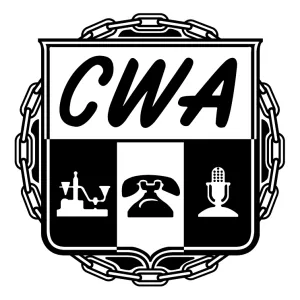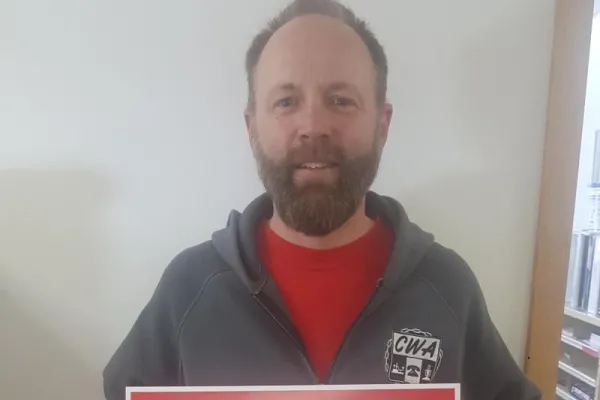About Us

Our History | Our Mission | Our Officers
The Communications Workers of America represents 700,000 workers in private and public sector employment in the United States, Canada and Puerto Rico.
CWA members work in telecommunications and information technology, the airline industry, news media, broadcast and cable television, education, health care and public service, law enforcement, manufacturing and other fields.
CWA Local 7200 represents employees of CenturyLink, AT&T, Avaya, and Dex Media.
CWA Local 7200
3521 E Lake St
Minneapolis, MN 55406
(612) 722-7200
The organization of the Communications Workers of America (CWA) in 1947 was the culmination of nearly a half-century of struggle for telephone unionism. Until the middle 1890s there was very little union activity among telephone workers. In 1898 the International Brotherhood of Electrical Workers (IBEW) began to try to organize some of the telephone linemen and cable splicers. Numerous strikes by the IBEW in the 1910s were unsuccessful as the Bell Telephone Company used its monopolistic control over the industry to defeat telephone unionism. However, during these years there was an upsurge of union membership among telephone operators mostly centered in Boston. A joint organizing campaign by the IBEW and Women's Trade Union League was very successful and won major concessions in 1914-1915. However, after a failed strike in 1919, the Bell Company began to aggressively promote company unions and aggressively fought all organizing drives.
Telephone unions found that it was very difficult to organize an industry in which the Bell Company had monopolistic control and almost unlimited resources. The company took advantage of the fact that telephone workers were geographically dispersed and the conversion to dial telephones made the system less vulnerable to labor slowdowns. Bell's hiring practices assured that the vast majority of telephone workers were relatively highly educated, native born Caucasians who were well spoken in English. Telephone operators were predominately young women who tended to work for only a few years before marrying and having families. These workforce demographics made union organizing difficult.
The passage of the Wagner Act in 1936, which removed all the legal barriers to industrial union organization, reinvigorated the campaign for telephone unionism. However, progress was slow as telephone workers were for the most part insulated from the worst effects of the Great Depression. The Bell Company's response to the Wagner Act that outlawed company unions was to transform them into so-called independent labor organizations (non AFL or CIO) that could claim to be in compliance with national labor laws. During the early CIO years from 1937 through 1942 union organizing proceeded slowly in the telephone industry. The focus was on amalgamating the various local unions that were plant, craft, or district based into a national federation.

During the next twenty-five years the CWA under the leadership of Joseph A. Beirne moved aggressively to organize all the telephone workers in the United States. AT & T with its monopolistic control resisted. It was, however, not until 1974 after years of labor-management unrest and a series of strikes that AT&T agreed to system wide collective bargaining. Shortly after the national contract was signed Joseph A. Beirne died and was replaced as President by Secretary-Treasurer Glenn E. Watts.
In the 1980s the CWA began to expand beyond telecommunications creating a Public Employees Department that successfully organized 34,000 New Jersey state workers in 1981. In 1985 Morton Bahr became the CWA President. In 1987 the CWA merged with the International Typographical Workers Union. In 1992 it absorbed the National Association of Broadcast Employees and the Newspaper Guild merged with the CWA. Today the CWA is one of the United States' strongest unions with more than 600,000 members.
CWA's Mission Statement- Improve the standard of living for our current and future members;
- Organize new workers into the union to bring the benefits of collective bargaining to the unorganized;
- Reaffirm our commitment to universal service so that all Americans have equal access to the information highway;
- Educate our members to vote in their own best interests and to build community coalitions at the national and local levels to support workers' rights.
from President Morton Bahr's Opening Address at CWA's 56th Annual Convention
June 13, 1994





